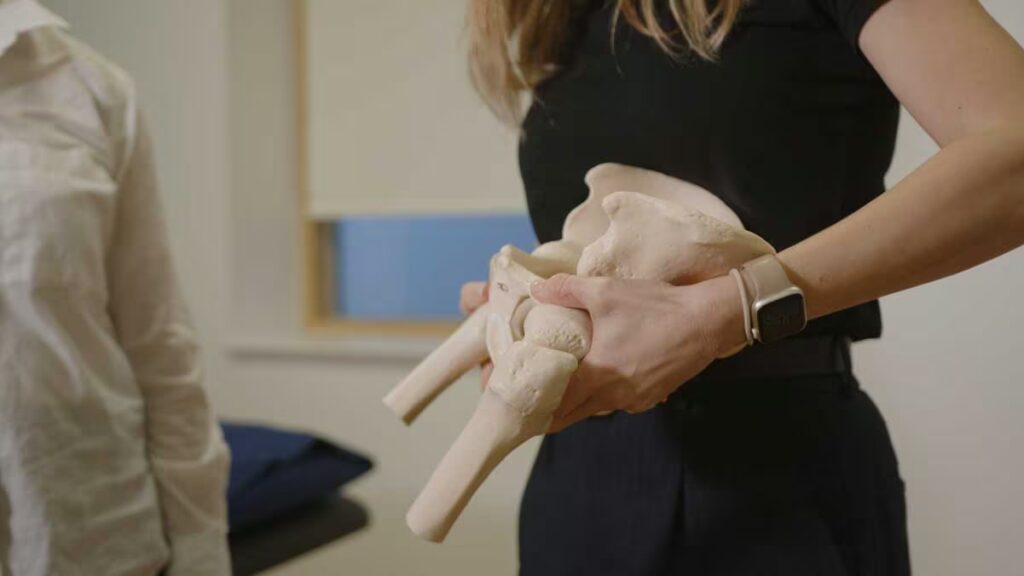The pelvic floor is a set of muscles that form a hammock or sling around the opening of the pelvis. The pelvic organs, such as the uterus, rectum, and bladder, are held in position by the pelvic floor muscles and the surrounding tissues. When the pelvic floor muscles and connective tissue that support the pelvic organs are weakened, the pelvic support is lost, resulting in protrusion of the bladder, urethra, cervix, and rectum. This is called pelvic organ prolapse.

Women with pelvic organ prolapse will experience excessive pressure on the lower abdomen associated with a bulging or aching sensation, difficulty in urination, and urinary tract infections. You may also experience a feeling of incomplete emptying of your bowel, or painful sex.
Prolapse can occur in any women regardless of whether they have had children or a vaginal birth. It tends to occur more towards menopause years, and can be related to genetics, obesity, lifestyle, heavy manual jobs or activity.
Your doctor will diagnose the condition by performing a physical examination, including a Pelvic examination, referring to medical and family history, may perform other tests such as cystoscopy, ultrasound scan or Magnetic resonance imaging (MRI). Your GP can prescribe vaginal estrogen or lubricant to use if sex is painful, or may refer you to a specialist gynecologist or urogynecologist for further recommendations.
Pelvic Health Physiotherapy can help manage and treat Pelvic Organ Prolapse. Current guidelines recommend conservative management before other treatment is considered. Conservative treatment such as pelvic floor exercises, vaginal pessaries (a device that is inserted in the vagina to support the pelvic floor), and lifestyle changes may be helpful.
Surgery can be considered in patients with severe symptoms of pelvic organ prolapse. There are different types of procedures to address a specific prolapse. The aim of pelvic floor reconstruction is to restore the normal anatomy and function of the pelvic organs.
Further information can be found at POGP (Pelvic Obstetric and Gynecological Physiotherapy) website.
A prolapse is a medical condition where an organ or tissue falls down or slips from its normal position. A pelvic organ prolapse is a condition that occurs when the structures such as the uterus, rectum, bladder, urethra, small bowel, or the vagina itself fall out from their normal position.
Utero-vaginal prolapse is a downward movement of the uterus and/or vagina. The main cause of the prolapse is the weakness in the supporting tissues of the uterus and vagina. The common factors such as the frequent lifting of heavy objects, chronic cough, severe constipation, menopause, childbirth, and pregnancy may increase your risk of developing uterovaginal prolapse.

A woman with mild prolapse may not experience any symptoms.
Your doctor will diagnose the condition by taking a detailed history and performing a physical examination. During the examination, you may be asked to cough or bear down. The doctor may also perform computerized testing of the bladder to test for urinary leakage.
Surgery can be considered in patients with severe symptoms of uterovaginal prolapse. There are different types of procedures to address the prolapse, such as a hysterectomy (removal of the uterus), hitching up the bladder or vagina, or repair and ‘tightening’ of the vagina. The surgery may be done through an incision in either the abdomen or the vagina, depending upon the condition. The aim of the surgery is to restore the normal anatomy and function of the pelvic organs.
Although uterovaginal prolapse is not always preventable, there are certain measures that can be taken to help reduce the risk of developing uterovaginal prolapse or prevent it from getting worse. These include:
If left untreated, severe cases of uterovaginal prolapse can cause ulceration and infection of the cervix and vaginal walls, urinary tract infections, lower tract bleeding, thickening of the skin of the cervix, urinary obstruction, and worsening of the prolapse.
Pelvic Health Physiotherapy can help manage and treat Utero-vaginal Prolapse. Current guidelines recommend conservative management before other treatment is considered. Conservative treatment such as pelvic floor exercises, vaginal pessaries (a device that is inserted in the vagina to support the pelvic floor), estrogen-containing vaginal cream, and lifestyle changes may be helpful.
Surgery can be considered in patients with severe symptoms of utero-vaginal prolapse. There are different types of procedures to address the prolapse, such as a hysterectomy (removal of the uterus), hitching up the bladder or vagina, or repair and ‘tightening’ of the vagina. The surgery may be done through an incision in either the abdomen or the vagina, depending upon the condition. The aim of the surgery is to restore the normal anatomy and function of the pelvic organs.
You can find more information at POGP (Pelvic Obstetric and Gynecological Physiotherapy) : https://thepogp.co.uk/patient_information/womens_health/vaginal_prolapse.aspx
or their leafet :
https://thepogp.co.uk/_userfiles/pages/files/POGP-Prolapse_2.pdf